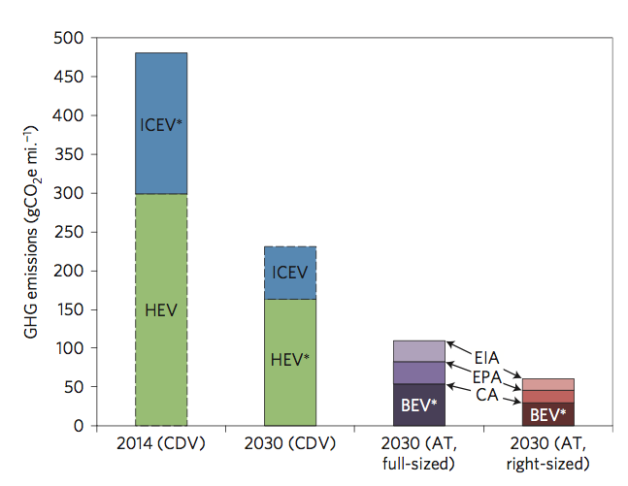Self-driven taxi fleets in 2030 can save up to 90% emissions

Driverless cars that run on clean electric power can be cost effective and cut greenhouse gas emissions up to 90%, says a study from Lawrence Berkeley National Laboratory.
If 5% of 2030 vehicle sales (about 800,000) are shifted to autonomous electric taxis, it would save about seven million barrels of oil per year and reduce annual greenhouse gas emissions by between 2.1 and 2.4 million tonnes of CO2 per year. This is the emissions savings from more than 1,000 two-megawatt wind turbines.
The per-mile greenhouse gas emissions of a self-driving electric taxi in 2030 would be 63 to 82% lower than a projected 2030 privately owned hybrid vehicle and 90% lower than a 2014 gasoline-powered private vehicle.
The better performance than private hybrid vehicles is owing to the right-sizing of the taxi which matches the taxi size with occupancy needs.
The sizing is responsible for half the savings promised.
Under the concept, taxis will come in various sizes to cater to different demands - a single passenger with no luggage, or four passengers with suitcases.
The study published in Nature Climate Change is titled, "Autonomous taxis could greatly reduce greenhouse gas emissions of US light-duty vehicles," and co-authored by Berkeley Lab scientists Jeffery Greenblatt and Samveg Saxena.

It compared cars with traditional internal combustion engines, hybrid-electric cars, hydrogen fuel cell vehicles and battery-powered electric vehicles. For each type, greenhouse gas emissions per mile travelled were predicted for 2014 and in 2030.
"Most trips in the US are taken singly, meaning one- or two-seat cars would satisfy most trips," Greenblatt said. "That gives us a factor of two savings, since smaller vehicles means reduced energy use and greenhouse gas emissions."
At present 62% of vehicle miles travelled in the US are for a single person, often travelling in large five-seater cars.
The other factor contributing to lower emissions is the source of energy. By 2030 power plants are expected to be using more renewable energy so that the greenhouse gas intensity of electricity will be lower.
Cost calculation
The costs of using privately owned electric cars in 2030 will still be more than gasoline-powered ones when considering the 12,000 odd miles covered in a year. Taxi fleets (running on electric battery) on the other hand which cover almost 70,000 miles a year would fare better as a cost-effective option.
This calculation included costs for maintenance, fuel, insurance, and the actual cost of the vehicle (assuming a five-year loan). The per-mile cost of fuel is lower and the savings can pay for the extra investment on the autonomous vehicle.
The autonomous technology is currently estimated to add as much as $150,000 (£96,150) to the cost of a vehicle.
Self-driving cars are also efficient given their ability to drive closely behind other autonomous cars to reduce wind resistance ("platooning"), optimally routing trips, and smoother acceleration and braking.
These effects however have not been included in the present study.
Transportation is the fastest growing source of carbon emissions and accounted for about 2,300 megatonnes of CO2 in 2010.
© Copyright IBTimes 2025. All rights reserved.





















